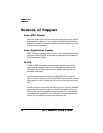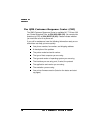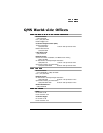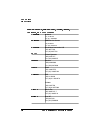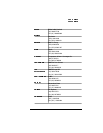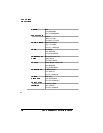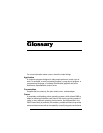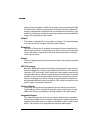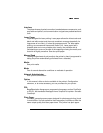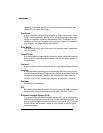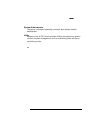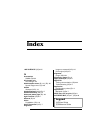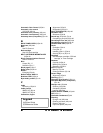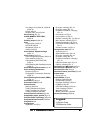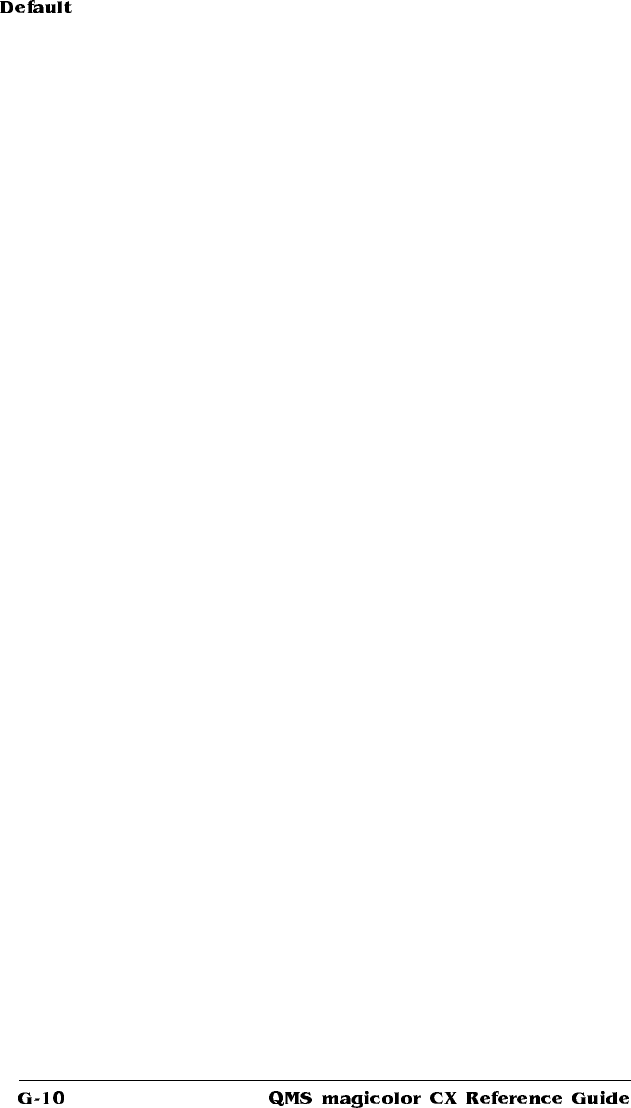
as they become available. A QMS Crown printer can process and print jobs
simultaneously instead of sequentially (multi-task) because of advanced
memory management techniques such as simultaneous interfacing, input
buffering, job spooling, emulation sensing processing, compile-ahead tech-
nology, and compressed data formats.
Default
The values or settings built-in to a system or program. The default settings
in this printer can be changed. See also
factory default
.
Emulation
The ability of the printer to respond to commands that are intended for a
different type of printer. For example, when the printer is set for PostScript
Level 2 emulation, it responds to the same commands that a PostScript
Level 2 printer does.
Engine
The non-intelligent part of a printer where the paper is physically processed
and printed.
ESP Technology
Emulation Sensing Processor Technology: technology that uses a form of
artificial intelligence to analyze incoming file data from any of the printer's
interfaces. ESP technology, which works with most popular commercially
available applications, selects the appropriate printer emulation from those
installed on the printer and processes the print job, freeing the user from
having to change printer switch settings or send software commands to
accommodate different printer emulations. ESP mode is an option for the
printer's serial, and parallel interfaces.
Factory Default
The printer settings that are programmed into the printer at the factory.
These settings can be changed through the printer control panel or over-
ridden with printer commands sent through software. See also
default
.
Imageable Region
The areas of a page size a printer can access, determined by hardware
limits (physical page size and margins required by the printer engine) and
software constraints (amount of memory available for the full-page frame
buffer). Also referred to as imageable area and printable region.



